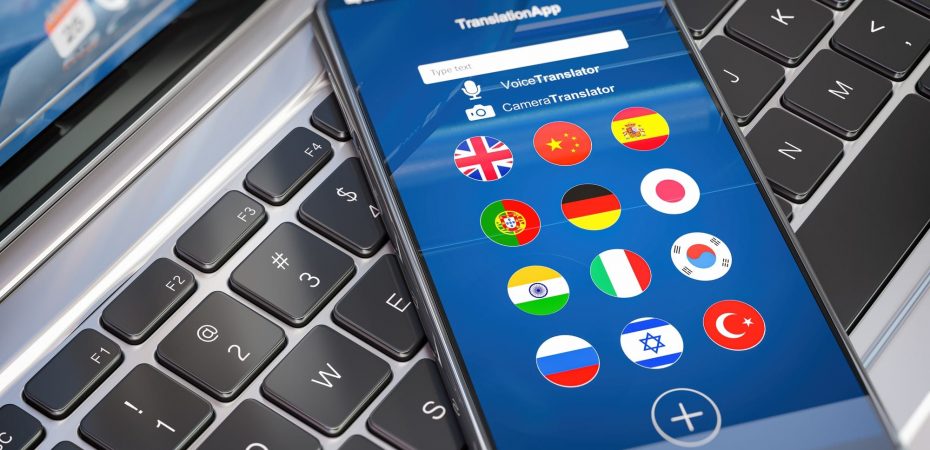In today’s world, people are connected in ways like never before, especially through the use of digital channels. While it’s easy to assume that English is the primary language of these communications on the web, in reality, multilingual digital communications have never been more relevant.
In the for-profit world, language affects consumer confidence. The same applies to the nonprofit sector. You want your consumers — your donors and prospective donors — to believe in your mission and trust that you will make a tangible impact with the help of their financial contributions.
Whether your nonprofit has a multilingual audience, or you are looking to expand into a new market with a new language, there are several key factors to consider in order to communicate with your audience effectively.
Best Practices for Multilingual Communications
Laying the Groundwork
- 1. Know your audience. Know what language(s) they speak. Social media platforms provide analytics dashboards with audience language statistics. If you find that your audience contains a large percentage of individuals using a language besides English, you might want to consider creating content accordingly for that segment.
- 2. Translation tools are good, but they do not replace humans. Companies like Google, Facebook, Microsoft and others have made great advances in auto-translation, but when it comes down to it, they cannot compete with humans. These tools do not capture linguistic nuances in their translations, and translations that are too literal can be a giveaway that these are automated — posing a risk that those audiences feel like an afterthought. Additionally, they do not reflect unique cultural norms, which are important to consider when speaking to multilingual audiences, especially to avoid any embarrassing faux pas.
- 3. Localize content and translations. It is important to localize your content and not rely too heavily on a “one-size-fits-all” approach, especially if your nonprofit has audiences in several countries. A message that works for a US audience might not have the same impact with a South African audience, for example, even though both may speak English as a primary language. By the same token, even if your nonprofit programs and primary audience are both centered in a particular city, a Spanish-speaking audience might respond differently to certain content than a Polish-speaking one.
Besides making sure that your messaging works for the local audience, you can set up filters on social media platforms, based on language settings and geographic location, to ensure that your different messages go to the right target audiences.
Multilingual Content in Action
- 1. Create multiple accounts for different languages. We recommend creating multiple social media accounts for your different language segments. This streamlines the communication you have with each segment — ensuring that you can exert greater control over their journey as a constituent of your organization, making it the most meaningful experience possible. It is also worth noting that this is used as the best practice by world leaders and in the corporate sector as well. Fun fact: Pope Francis has nine different language accounts on Twitter!
- 2. Alternatives to multiple accounts: If your organization doesn’t have the bandwidth to monitor and post on multiple accounts, consider double posting — using one account but separate posts for each language. This works for bilingual audiences, but, keep in mind that if you are posting regularly or the majority of your audience is fairly bilingual, multiple posts with similar content may be tedious.
A third option is including multiple languages within one post, differentiating them with forward slashes or emojis. However, this makes the post content very long, and risks not capturing the audience’s attention as they look for their language within the content. Moreover, if you consistently post one language first, then it could give a negative impression of privileging one audience over another.
- 3. Share visual content and keep posts short. Everyone speaks the same visual language, and emotion-evoking images have a big impact. People love seeing and sharing photos that make them feel good, as well as other imagery that might move them to action. Your fans and followers are 44% more likely to engage with and share content that contains imagery. Also, remember to defer frequently to sharing positive content. Posts that are amusing, interesting, exciting or pleasure-driven will get more engagement than posts that incite sadness, fear or anger. Of course, in the event of advocacy pushes or urgent calls to action for crises and emergencies, it is understandable that the seriousness of the content shared may call for different treatment.
- 4. Additional tips to consider:Keep posts to fewer 250 characters.Use eye-catching quote images, GIFs, infographics and so on. Use emoticons — posts with emoticons get a 57% higher like rate and 33% higher share rate.Use short videos of 30-45 seconds and remember to put captions, as 85% of Facebook users play video without sounds.
Additional Considerations
- Keep time differences in mind, especially if your audience is spread out. Know when most people are online to determine the best time to post. To give an example, if your headquarters are in the UK and you are communicating with an audience in the US, remember that there is a time difference of 5 to 8 hours between your home office and the East and West Coasts. In general for the US, the optimal times to post by social media channel are:
- Facebook:
- Thursdays, Fridays, Saturdays and Sundays at 9am, 1pm and 3pm are generally the best for reach and engagement.
- Saturdays and Sundays see the highest engagement.
- Posting at 3pm will get the most clicks.
- Posting at 1pm will get the most shares.
- Twitter:
- Wednesdays at 12pm, 3pm, 5pm and 6pm, during people’s lunch breaks and on their commutes.
- Instagram:
- Mondays and Thursdays between 8am and 9am.
- LinkedIn:
- Tuesdays, Wednesdays and Thursdays at 5pm.
Interested in multilingual marketing? We are happy to help! Please email Flavia, our Senior Account Manager of Global Philanthropy, at flavia@faircomny.com.




